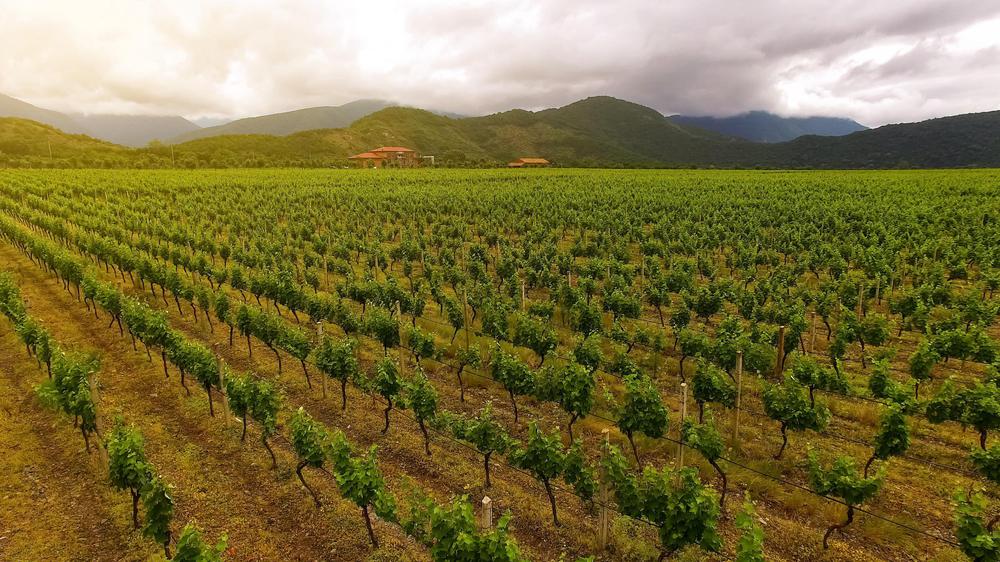In the world of wine, Georgian winemaking stands out with its rich history and distinct practices, shaping some of the most unique vintages. This article takes you through the meticulous processes of bottling and storage, essential elements that critically influence the final quality of the wine. Focusing on these key aspects, we'll explore both traditional methods and modern innovations that hallmark this venerable craft. Tailored for wine enthusiasts and travelers eager to delve into the intricate world of winemaking, this piece provides an in-depth glimpse into the essence of the Georgian wine industry.
The Georgian Wine Legacy: A Blend of Tradition and Technique
Georgian winemaking, an art as ancient as the hills of the Caucasus, is a blend of time-honored tradition and innovative techniques. The country's winemaking history, dating back over 8,000 years, is symbolized by the qvevri, an oval-shaped clay vessel used for fermentation, ageing, and storage of wine. These vessels, a vital part of the UNESCO-listed 'Ancient Georgian traditional Qvevri wine-making method', are key to understanding the unique flavor profiles of Georgian wines. The qvevri's size and shape, along with the ground temperatures in which they are buried, play a crucial role in the fermentation process, yielding wines with exceptional structure and flavor.
The Science of Bottling: Ensuring Quality and Longevity
The transition from qvevri to bottle is a critical phase in winemaking. Georgian wines, whether red or white, undergo various aging periods before bottling. Red wines can age from a few years to several decades, developing complex flavors ranging from fresh fruit to smoky and vanilla notes. White wines, typically enjoyed young, exhibit floral and fruity aromas when aged between 1 to 3 years. The bottling process must be timed perfectly to capture the essence of the wine, ensuring it reaches the consumer at its peak.
The Art of Storage: Maintaining the Essence
Proper storage is paramount in preserving the wine's quality post-bottling. The ideal conditions involve storing the wine in a cool, consistent temperature range of 12-16°C (54-61°F), preferably in an underground cellar or a specialized wine cabinet. This consistency in temperature is more crucial than the actual degree, as fluctuations can adversely affect the wine's quality. Moreover, the orientation of the bottle, whether horizontal or upside down, is vital to keep the cork moist and prevent oxidation, a key enemy of wine longevity.
Serving and Enjoyment: The Final Touch
The experience of enjoying Georgian wine is an art in itself. Serving temperatures vary based on wine type, with whites generally favoring cooler temperatures and reds slightly warmer. The choice of glass, the method of pouring, and even the lighting during tasting play pivotal roles in appreciating the wine's qualities. Decantation, especially for full-bodied reds, allows the wine to breathe and enhances its flavors. However, post-opening, the wine should ideally be consumed within 2 hours to avoid quality degradation due to oxidation.
The Future of Georgian Winemaking: Embracing Tradition and Innovation
As the global wine industry evolves, Georgian winemaking continues to stand out with its blend of ancient practices and modern sensibilities. The continued use of qvevris, despite their production and maintenance challenges, is a testament to the commitment to tradition. However, innovations in temperature control and hygiene practices demonstrate a willingness to adapt and improve. This balance between the old and the new makes Georgian wine a fascinating subject for wine lovers and travelers alike, offering a unique taste and story in every bottle.
Conclusion: A Timeless Journey Through Georgian Winemaking
Georgian winemaking, from the qvevri to the bottle, is a journey through time, tradition, and technology. The intricate processes of bottling and storage play a crucial role in defining the quality and character of the wine. As the world of wine embraces diversity and natural winemaking, Georgian wines, with their unique methods and rich flavors, offer a distinctive experience for the connoisseur and casual drinker alike. For those exploring the world of wines, a deeper understanding of these processes not only enhances the enjoyment of the wine but also provides a window into the culture and history of Georgian winemaking.

 Methods of Georgian Winemaking
Methods of Georgian Winemaking
 From Qvevri to Bottle
From Qvevri to Bottle
 Qvevri Wine Fermentation Process
Qvevri Wine Fermentation Process
 Wild Yeasts in Georgian Winemaking
Wild Yeasts in Georgian Winemaking
 Influence of Terroir on Georgian Winemaking
Influence of Terroir on Georgian Winemaking




